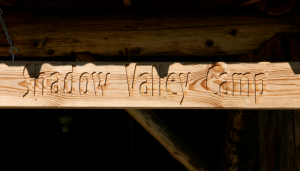Disclaimer: I wrote this piece while we were at the reunion for my husband’s side of the family and read it during Heritage Night on the evening assigned to the Philos. Several people asked me to put it on the blog. It’s a little longer than my normal posts, so bear with me and enjoy!
When I grew up, my entire extended family of 2 grandparents, 16 aunts and uncles, and 39 grandchildren lived within 90 miles of one another. Our idea of a reunion was gathering at the park in Pipestone, Minnesota for a noon picnic. All the aunts brought fried chicken, salads and homemade desserts: angel food cake, sour cream chocolate cake, sour cream rhubarb pie, strawberry-rhubarb pie, apple, peach and cherry pies. The uncles brought bats, baseballs and gloves.
We ate dinner fast before the Jell-o melted and the potato salad went bad. When the food was gone, the uncles and all the male cousins willing to brave Uncle Ralph’s killer fastball, swarmed onto the ball diamond and played for blood. The aunts sat in the shade, gossiped and told the impatient, younger cousins they had to wait a half hour before going swimming. At the end of the longest half hour in the history of the world, the youngsters changed clothes in the car so the aunts could save the locker rental fee. Then, the kids ran to the bathhouse, slapped their dimes on the counter and hit the pool. When the ball game ended with winners gloating and the losers not speaking to the gloaters, the swimmers were hauled dripping and screaming from the water and everyone went home.
So the first reunion on my husband’s Walker side of the family was a real eye opener. It was in Phoenix, somewhere around 1979, which meant members of the far-flung Walker brood had to buy plane tickets and pay for motel rooms. The amount of money required was a real shocker to a Midwestern girl whose parents wouldn’t spring for a locker fee at the swimming pool.
But that was only the first shock in a whole string of shocks. The Walker aunts and uncles had drawn up a strict schedule of events and expected people to stick to it. The schedule included things like meals, games, free time and a big meal where everyone was introduced and told something about their families and lives. Not only that, they suggested activities for free time and kept track of what we chose.
Those of us in the high school through young adult crowd, cocky and smarter than we would ever be again in our entire lives, rolled our eyes at our elders. “Planned spontaneity?” we scoffed. “Who needs it?” Someday, we agreed, when we were in charge of the reunions, we would not plan things to the enth degree and impose our obsessive-compulsive schedule disorders upon our children.
But a few decades later, a strange thing happened. Somebody, or a bunch of somebodies, came up with a cockamamie idea about the perpetual Shadow Valley Family Camp where the far-flung Walker brood could gather for a week in the summer and maintain family ties. The formerly spontaneous young adults morphed into bunch of middle-aged planners and made the previous generation look like amateurs. Suddenly there was mission statement, a website, a camp week scheduled a year in advance, a building plan, a menu, a humongous shopping list, a cookbook, KP duty, a work roster, historical documentation and a daily schedule which includes blocks of time for work, planned excursions and recreational time, which is another name for free time, but it’s not called free time because we refuse to impose our obsessive-compulsive schedule disorders upon our children. But if anyone younger than 25 can’t think of anything to do during recreation time, the middle-aged planners will gladly give you suggestions and record your choices.
About two weeks before the 2008 Shadow Valley Camp, my siblings and I were in charge of my side of the family’s annual reunion. It was one of the most organized to date. We sent invitations in January, and with only a handful of RSVPs by mid-May, sent a series of emails reminding people to RSVP so we would know how much broasted chicken to order and wouldn’t run out of food which is what happened to last year’s planners who graciously gave us a heads up so we knew what was coming.
We gathered in the Pipestone Park, and our dynamite organization paid off big time. There was enough chicken and more than enough dessert since we told people to bring either a salad or dessert and everyone brought dessert. There was no baseball game, because we only bring dessert to our family reunions so everyone’s a little too hefty to run the bases these days. Instead, we had a display of labeled historic family photos people could order, and it was a big hit because it was kind of a new idea for us to label photos and then share them. And thirty minutes after the meal, the kids begged five bucks from their parents and went swimming. Between that and $6.50 per head for lunch, the kids had to change clothes in the cars to save the cost of locker fees.
All afternoon, people complimented me about the reunion. “How did you do it?” they asked. “When did you get so organized?” they asked.
“During family camp with my husband’s side of the family,” I told them. “We’re going there again in a few weeks.”
“Maybe we should incorporate more of their ideas,” one of my cousins suggested.
I choked on a chicken wing imaging their reaction to a reunion schedule, work rosters and recreational time suggestions. Once I dislodged the chicken bone stuck in my throat, I answered. “Maybe not. Organization gets a little pricy, you know. Reunions on Hiram’s side of the family cost $60 a person. And they last a week.”
“Maybe we’re organized enough,” someone remarked and they all walked away.
After that reunion, I counted the days until Shadow Valley Camp began, eager to participate in the bargain of the year. For $60 a week, I get three meals a day with no chance of food running out, a daily schedule, and plenty of suggestions about what to do during recreational time. Somebody even records my choices, which is great, because at age 52 I can’t remember anything for more than a few minutes and need all the help I can get.
If that’s the cost of organization, it’s worth the price.


